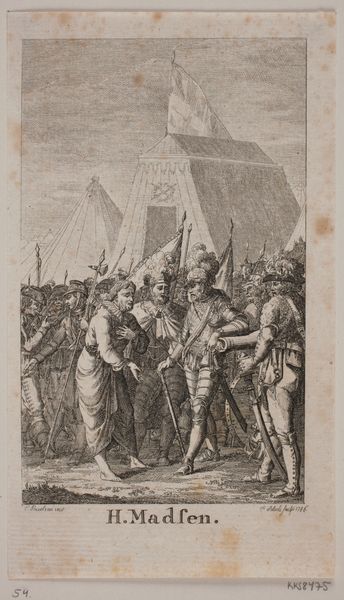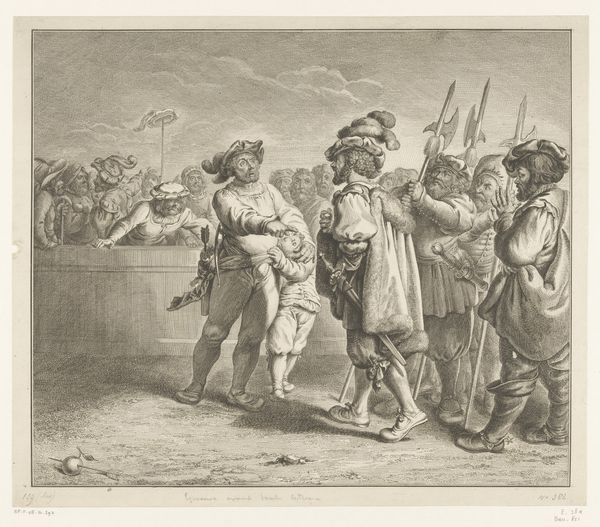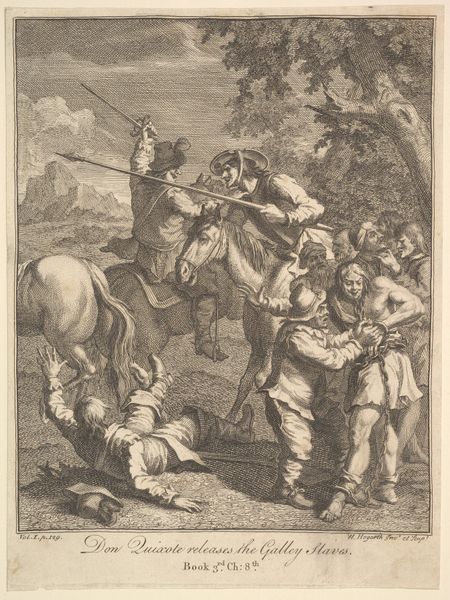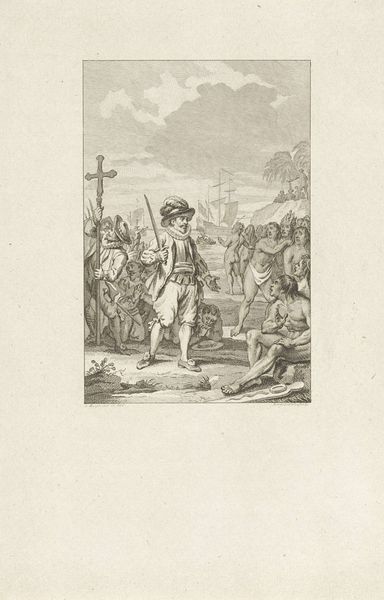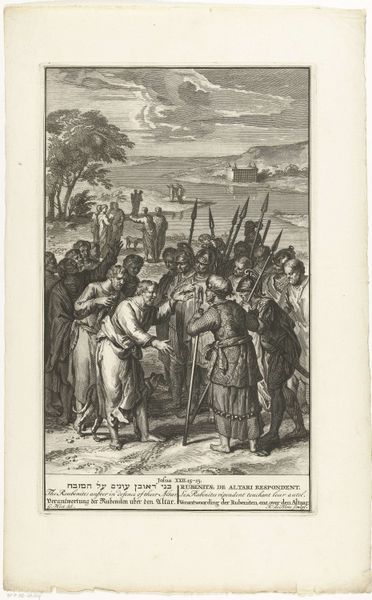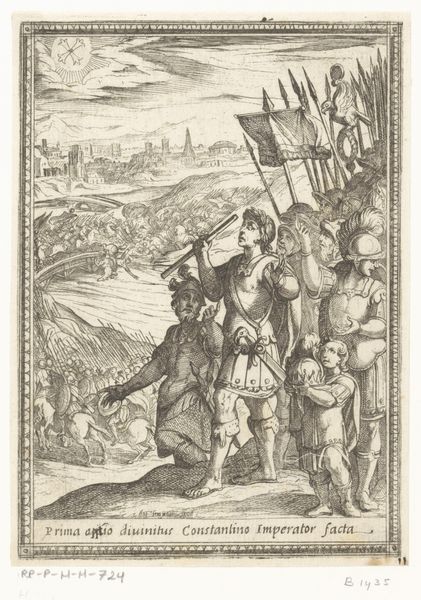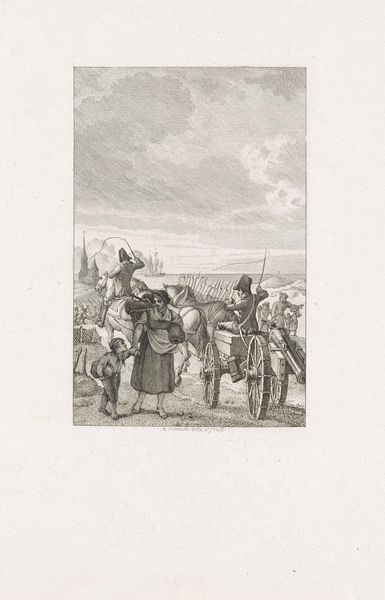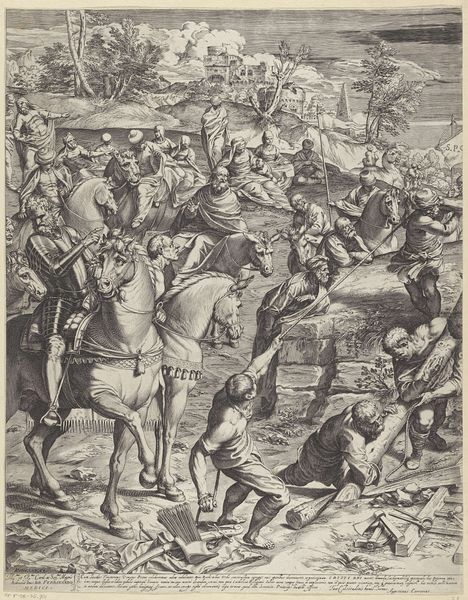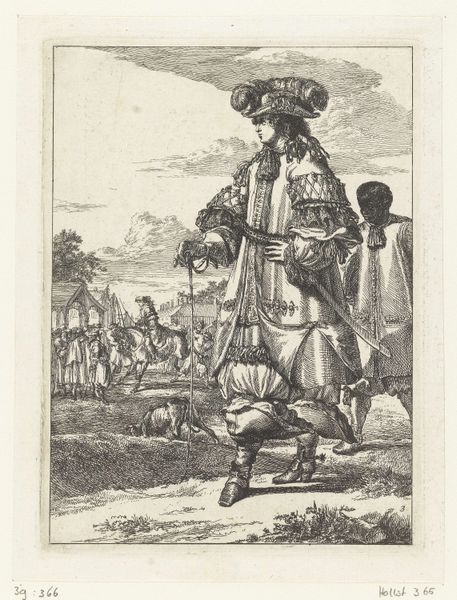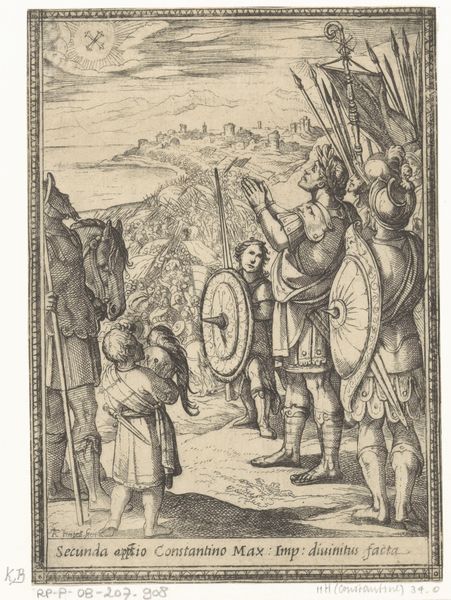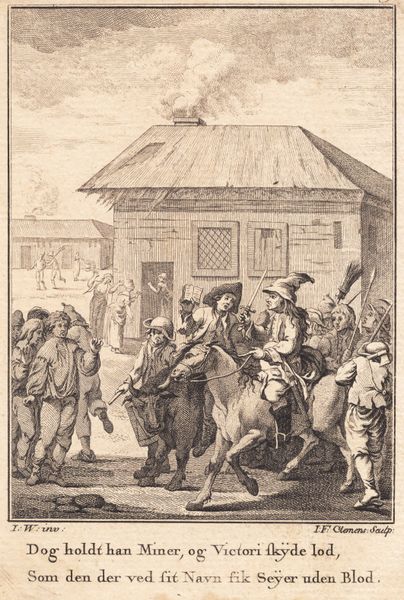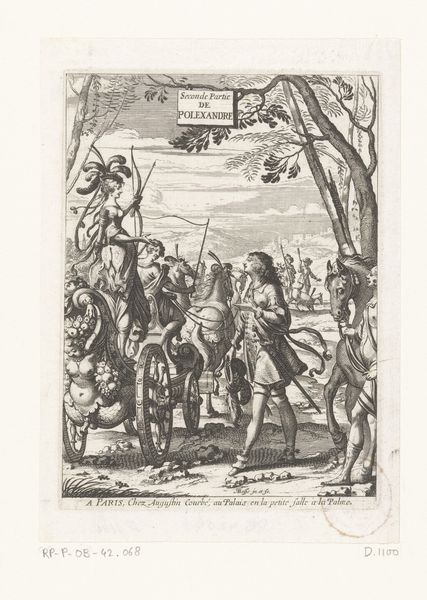
print, engraving
#
baroque
# print
#
landscape
#
figuration
#
genre-painting
#
history-painting
#
engraving
Dimensions: height 315 mm, width 212 mm
Copyright: Rijks Museum: Open Domain
Curator: Pieter Nolpe’s 1638 engraving, “Intocht van Maria de M\u00e9dicis te Amsterdam (plaat 7)”, captures a moment in the grand procession honoring Maria de Medici's arrival in Amsterdam. It is currently held in the Rijksmuseum collection. Editor: My eye is immediately drawn to the sky; it looms rather heavily, almost dwarfing the figures in the foreground. Despite the pomp of the occasion, there is a stillness, a sense of expectation, and I can't quite tell what everyone seems to be waiting for. Curator: The rendering of this landscape is indicative of Baroque printmaking—note the intricate layering achieved through precise engraving, a testament to the skill and time invested by Nolpe. This isn't just a picture; it's a meticulously crafted object demonstrating skilled artisanship of the period. Editor: I agree; the composition focuses on what appears to be a royal procession; and a cluster of figures—a possible envoy pointing perhaps towards the direction of her arrival? It almost reads as a symbol-laden announcement, each figure conveying a message of welcome or acknowledgement. It creates a feeling of building anticipation. Curator: Indeed. Considering the scale of such an elaborate civic event, this print likely functioned as a form of proto-mass media, a relatively affordable way to disseminate the spectacle to a wider audience and shape perceptions of Medici’s visit. This makes the "print" a powerful medium. Editor: Absolutely! Looking closer at the faces, I see a mix of reverence and curiosity; there are almost layers of subtle expression conveyed through Nolpe's expert linework. Consider the positioning of de M\u00e9dicis obscured amongst a larger company; the symbols tell a larger narrative about power, diplomacy and public image, revealing fascinating aspects about 17th-century Dutch society. Curator: It's interesting to consider how prints like these contributed to building a collective identity within Amsterdam. They would have circulated widely, shaping shared memories and contributing to the narrative surrounding significant political events. Its purpose beyond simple decoration becomes evident. Editor: Reflecting on it, the artist captures both the immediate moment and a lasting message about Dutch identity through a foreign monarch's welcome. The visual language offers a timeless interpretation. Curator: I concur. Examining the print’s materiality highlights its socio-political function—a meticulously crafted, widely accessible medium used to disseminate power dynamics.
Comments
No comments
Be the first to comment and join the conversation on the ultimate creative platform.
